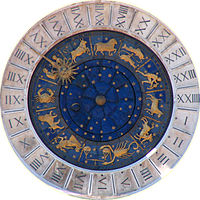
Photo from wikipedia
Abstract Application of progeny test breeding values to forecast yield gains at rotation-age in genetically improved stands remains a very challenging yet crucial task for breeders of Douglas-fir and other… Click to show full abstract
Abstract Application of progeny test breeding values to forecast yield gains at rotation-age in genetically improved stands remains a very challenging yet crucial task for breeders of Douglas-fir and other long-rotation timber species such as western hemlock, white spruce, Norway spruce, and Scots pine. Evaluation of the economic returns on genetic improvement requires reliable estimates of yield gains at rotation age. Large-plot realized gain trials should provide more accurate estimates of yield gain than inferences from progeny tests, but are most dependable when they reach rotation age or at least approach rotation age. A set of coastal Douglas-fir realized genetic gain trials in western Oregon, based on a first-generation breeding program, was measured most recently at plantation ages ranging between 17 and 21 years. The trial was established on five sites at a spacing wide enough (3.6 × 3.6 m) to assume that the trees could be grown to rotation age with no further silvicultural intervention. A growth model, CIPSANON v. 4.0, projected the current tree lists from these trials to plantation age 60 years to facilitate estimation of yield gains at various rotation ages up to 60 years. The following two simulation approaches were explored: (1) apply genetic-gain multipliers developed from a previous study for diameter and height growth, and (2) assume that genetic gain differences were fully represented by plot-level site index expressed at the most recent measurement. The two approaches resulted in similar estimates of realized yield gain at plantation ages up to 60 years. Relative gain decreased over time, but absolute gain (in cubic meters or board feet) increased over time. Relative stand volume gain simulated to the average current rotation age of 50 years was about 30% of the relative realized gain measured at plantation age 10/12 years (birth age 13/15 years) and about 38% of the relative realized gain measured at plantation age 17–21 years (birth age 20–24 years). Several validation needs were identified including magnitude of genetic-gain multipliers, duration of annual multiplier application over the duration of a simulation, adjustment of multipliers as the stand ages, and most appropriate multiplier resolution (tree versus stand). A potentially critical knowledge gap remains about any genetic improvement effects on yield gains associated specifically with increased carrying capacity that would be consistent with the crop ideotype concept.
Journal Title: Forest Ecology and Management
Year Published: 2020
Link to full text (if available)
Share on Social Media: Sign Up to like & get
recommendations!